Inside London’s Bicycle Retail Scene
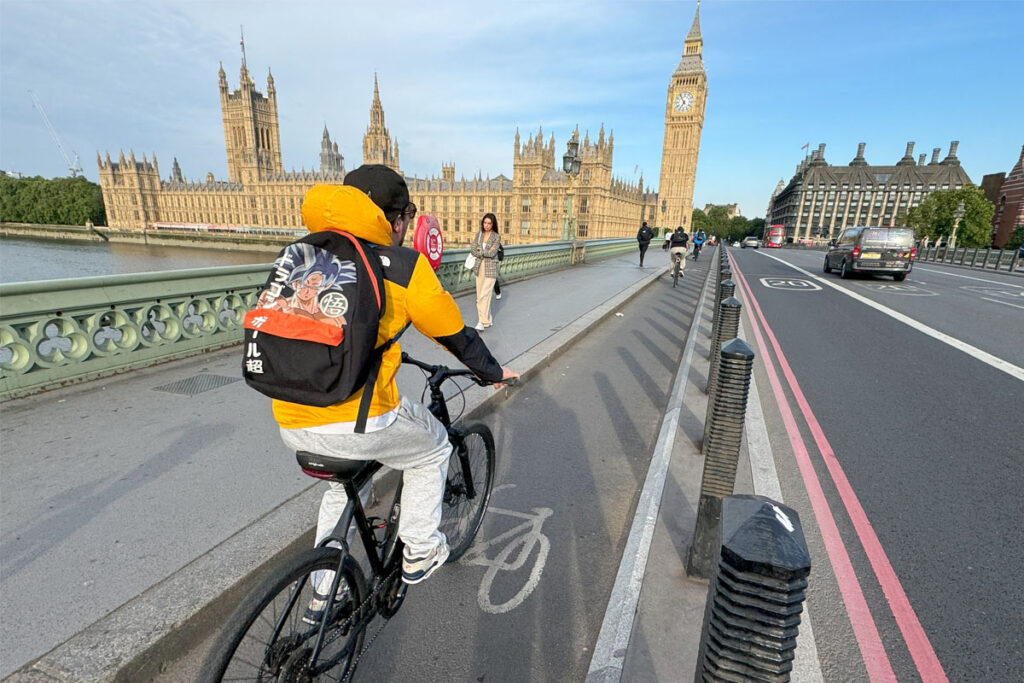
London, UK
Recently I had the opportunity to spend a week in London and visited eight diverse bicycle businesses. This article, which is the first of two, gives an overview, then looks at four of them, with four more in depth visits to other stores documented in a separate article entitled “Ideas from Four Unique London Bike Shops.”
It’s a Different Market
I’m not saying the London bicycle retailers I visited and London’s cycling market in general is any better or worse than Australia’s. The best way to describe it would be, “Quite different!”
In Australia we have fewer people, more countryside and less cycling infrastructure in our cities, so we have much more mountain biking, road cycling, gravel riding and a more sporting / recreational flavour to most of our bike shops.
By contrast, London packs nine million people into relatively small space, with a further 10 million living within a close radius, from which many commute each day into London to work. In total you have close to Australia’s entire population living in an area that’s significantly smaller than our smallest state, Tasmania.
All of the shops that I visited were either in the city centre of London or inner suburbs. In these areas, the vast majority of people live in apartments within buildings that are at least a hundred of years old, if not much older. The same goes for the bike shops themselves. All but one I visited were housed in old buildings.
None of the stores had any off street car parking and most had scarce nearby on street parking. The same applied to their customers’ homes. Added to that, central London has a daily congestion charge of £15 (A$30) that applies if you don’t have a local resident exemption and you drive for even one minute within a large central area that encompassed most of the stores I visited.
There’s also a larger ULEZ (Ultra Low Emissions Zone) in which any vehicle that does not meet strict emissions standards pays a further tax. Then there are LTN’s (Low Traffic Neighbourhoods) in which cars are blocked from certain roads while bikes are allowed to pass. Add to that 20 mph (30 kph) speed limits on most roads, extensive but expensive public transport and a much more advanced network of protected cycling routes.
Finally, due to the density and old buildings there are no local K-marts, big box retail strips or other mass merchants anywhere near the centre of London… at least none that I saw, so that’s another major competitor Australian dealers face that’s not present there.
All of these factors combine to make London a city where there’s relatively less car traffic and way more cycling happening for everyday activities than you see in any Australian city – even though the weather there is colder and wetter than most of Australia’s.
Not surprisingly, the bike shops I visited reflected their environment and customer base. But they still faced a lot of the same challenges as Australian stores. Over the past two years they’ve seen an even tougher general economy and bicycle market downturn in the UK than Australia and quite a few bike shops, including some larger chains, have gone out of business.
Top End of Town
We’ll start with three stores that I briefly visited, two of which would be better described as cycling apparel stores rather than bike shops that are all within a few hundred metres of each other on either side of the famous Piccadilly Circus. Rent for stores in this area are breathtakingly expensive. No regular bike shop could hope to be financially viable here.
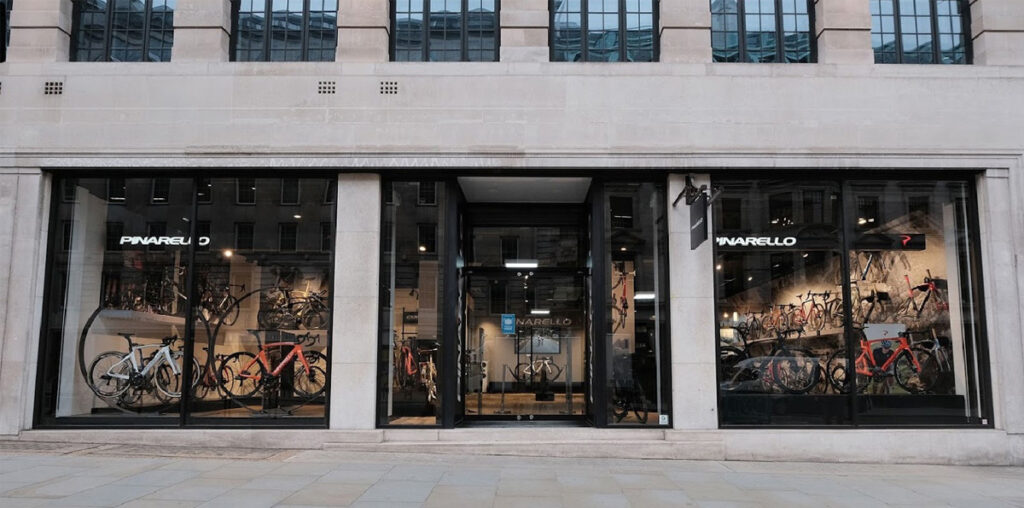
Pinarello
Right in the heart of Regent Street, one of the most famous and expensive shopping streets in London, you’ll find this huge triple fronted Pinarello concept store.
At a rough estimate, given its large size and that rents of A$4,000 and more per square metre per year are not uncommon for such premium space, they’re probably not getting much change out of a million dollars per year in occupancy costs for a store that looked to operate with only a couple of staff.
I asked a team member for more information. He said the shop had been open for about five years but was more of a branding statement and flagship showroom.
Pinarello, which was previously purchased from the Pinarello family by a subsidiary of the luxury goods giant LVMH, has more recently been purchased by Ivan Glasenberg for a rumoured A$320 million. He’s a South African born global mining mogul, known for playing business hard and often close to controversy. According to the Australian Financial Review, Mr Glasenberg had a net worth of A$13.6 billion as at 2023. He’s also an avid cyclist and triathlete. Clearly there’s no problems if this store runs at a loss…
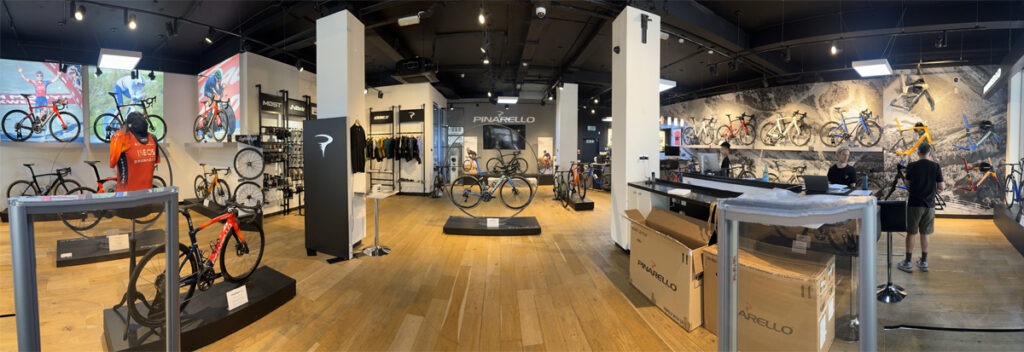
Walk inside and you’re embraced by high end carbon road heaven. Although the day I visited a recent delivery of bikes under the counter to the right let down the overall effect.
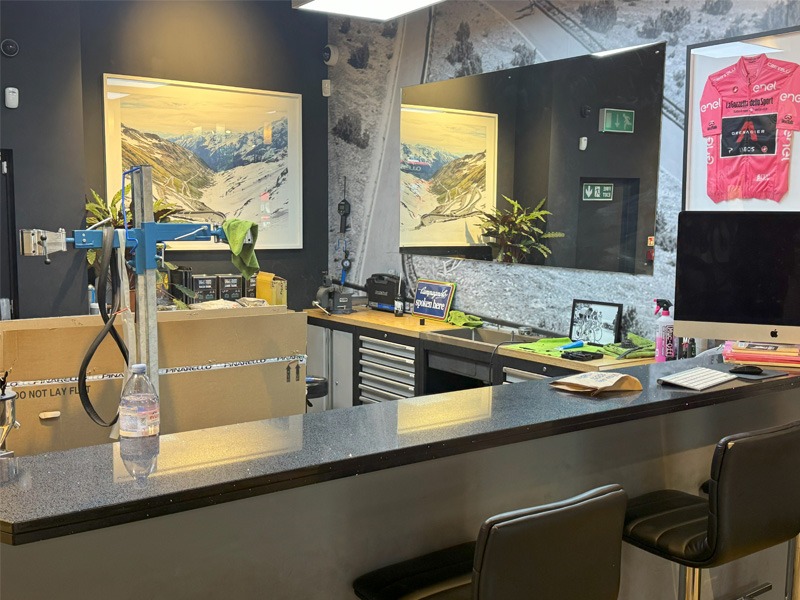
The workshop was well set up, but quite small and not particularly busy. The bench and bar stools so customers could watch their bikes being worked on was an interesting feature that would probably not suit every type of mechanic.
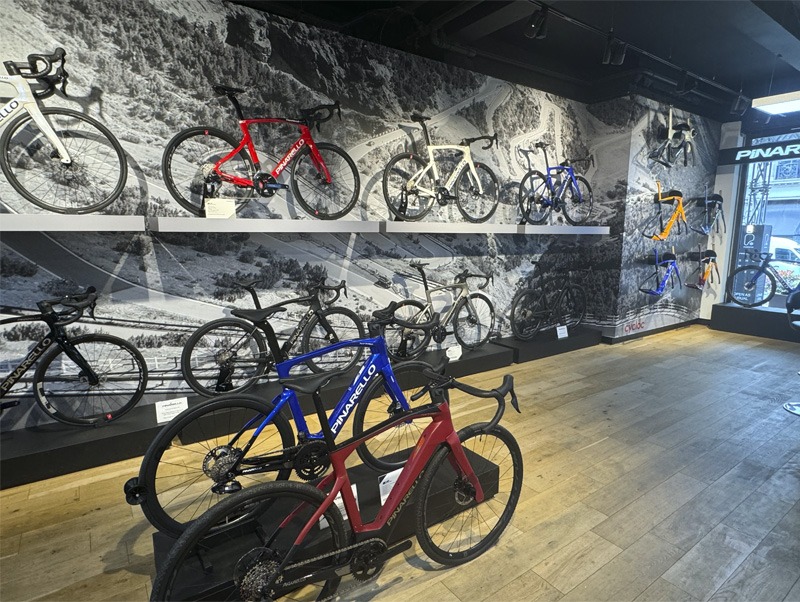
This was more of a showroom than a store, with lots of open space.
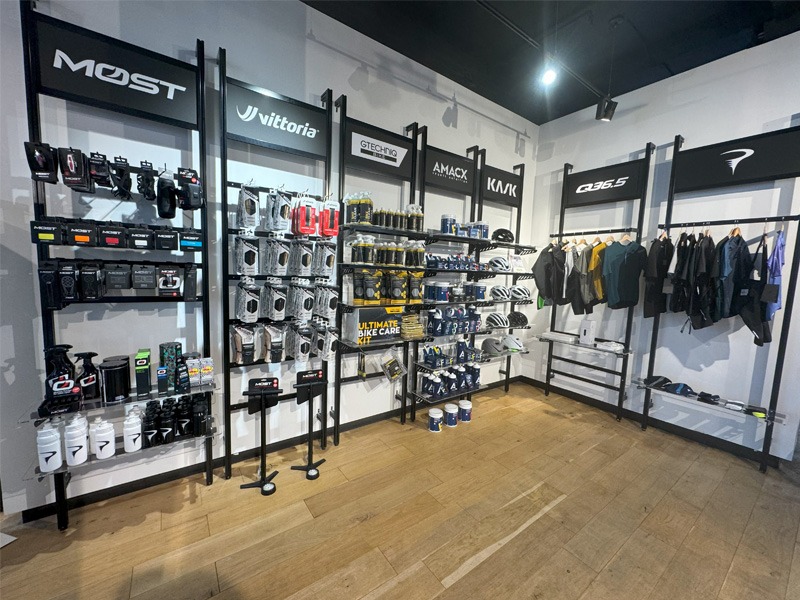
Their P&A range was quite limited and solely catering for high end road customers.
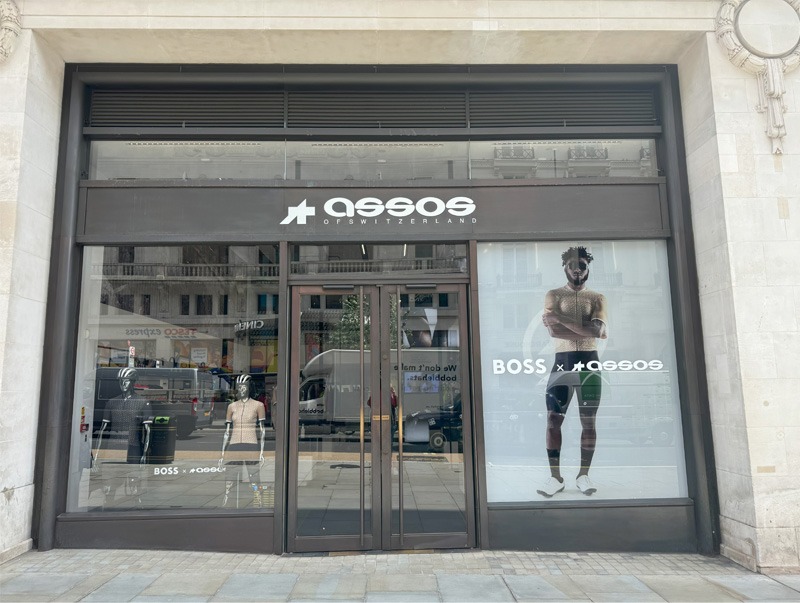
Assos
Just a few doors further towards Piccadilly Circus from Pinarello you’ll find another grand concept store – Assos. This store has been in place since 2016 and even though the fitout was top quality, I was told that it’s about to have a major refit.
Like its near neighbour Pinarello, Assos, which was founded in Switzerland, was a family owned business for decades before being bought out by wealthy investors a year prior to the London showroom opening.
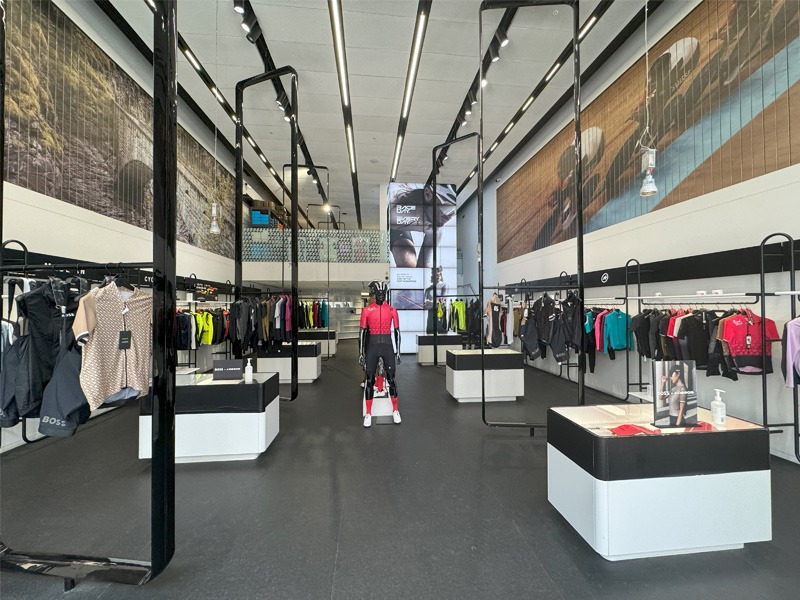
Assos puts its double height cycling to good effect, with a wide open front section and most of their stock on the upper and lower mezzanine levels at the rear.

These giant billboards on either side of the store have three sides and can rotate, to each display three different images. They weren’t rotating when I visited, and I would not be surprised if the refit includes replacement with electronic screens.
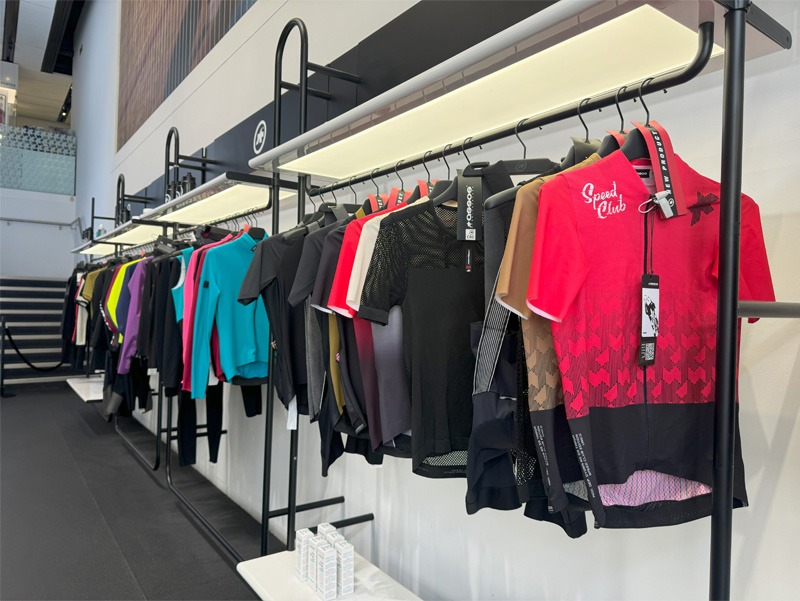
The warm, soft lighting above each rack showed the garments’ colours off to their best advantage.
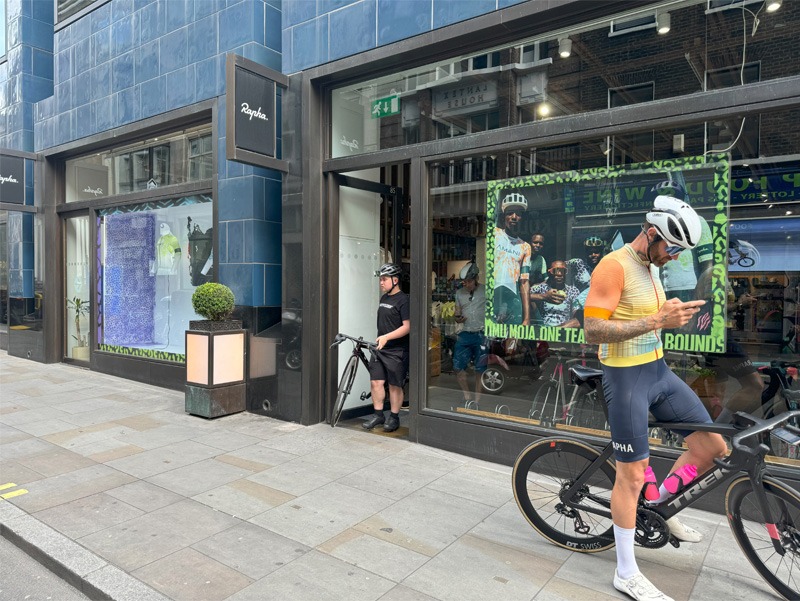
Rapha
Global apparel brand Rapha was created in London by Simon Mottram in 2004. It’s now owned by two members of the Walton family, grandsons of Walmart founder Sam Walton who are both keen cyclists and part of one of the richest families in the world.
Rapha’s clubhouse is about 200 metres further north from Assos, even closer to Piccadilly Circus but unlike the other two, it’s located one street back from Regent Street on the corner of two slightly less grand streets, where the rent would still be high, but perhaps not quite so stratospheric.
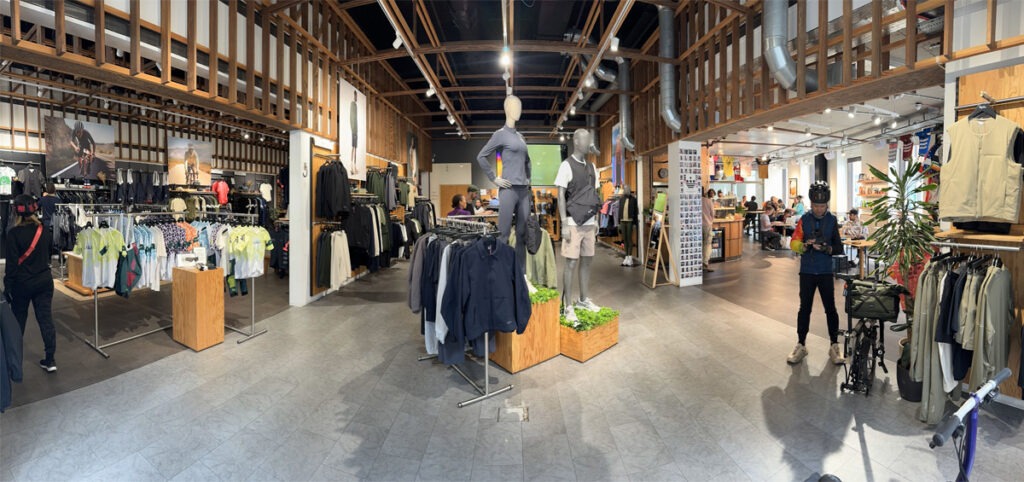
As we recently wrote about in more detail here when visiting Rapha Sydney, Rapha calls its retail stores “Clubhouses” and places huge emphasis upon building a community and making their venues activity hubs.
When I visited the London clubhouse was busy, particularly the café and it looked like a bunch ride had just returned there.
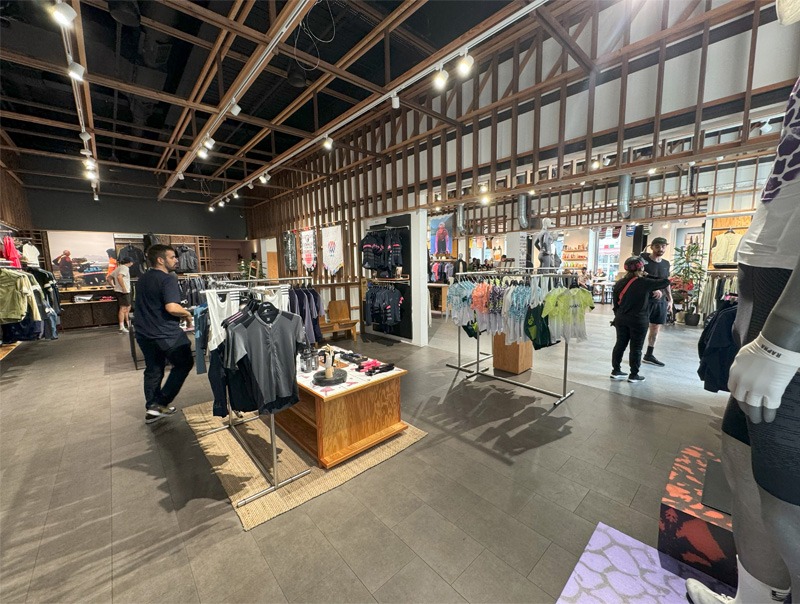
Rapha have opted for a pared back, “minimalist” fitout for their London clubhouse, which was divided into three sections, probably at least in part dictated by the structural constraints of the old building they occupy.
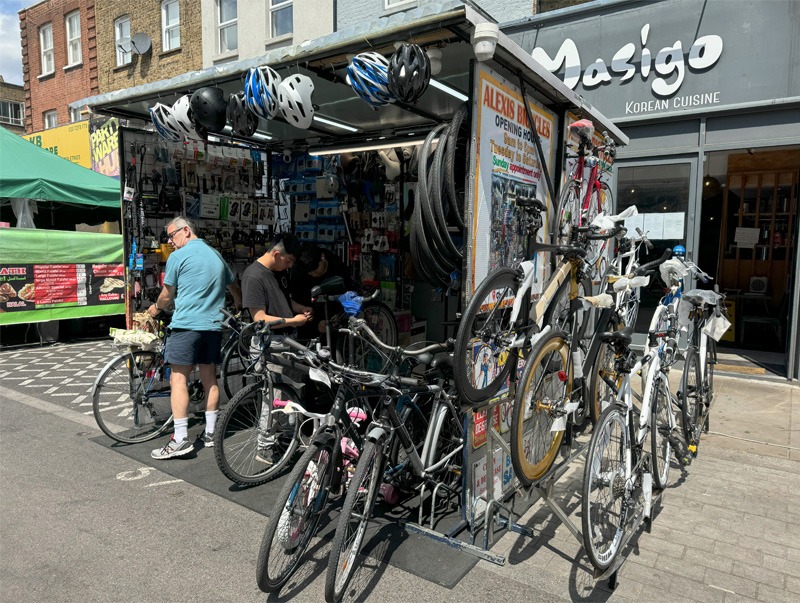
From One Extreme to the Other…
Having visited three of the most expensively located bike retail businesses you’re likely to find anywhere in the world, my next stop was at the opposite end of the spectrum.
This popup store sold new bikes plus a full range of P&A and did mechanical repairs, all from an outdoor street market popup stall that was probably not more than about 10 square metres in area.
These were not the famous Portobello Road, Covent Garden or Camden Markets, but the much smaller, quieter and less well known Chapel Markets that appeared to mainly serve the local residents of a less glamourous inner city suburb.
All of the bikes I saw on sale here were relatively low to mid-priced models. From their Facebook page it appears that this store has been running for nine years, all year round, six days per week. I visited on a sunny summer’s day, but working here must be tough through a London winter where it snows on average for 16 days per winter!
From a business perspective, the upside is super low overheads. These markets are run by the London Borough of Islington who display all of their rents on their website. Not knowing the exact measurements, it looks like they would be paying no more than £300 per month (A$600 per month) which equates to $7,200 per year. That’s certainly cheap rent and probably less for a year than the Pinarello store pays for a week.
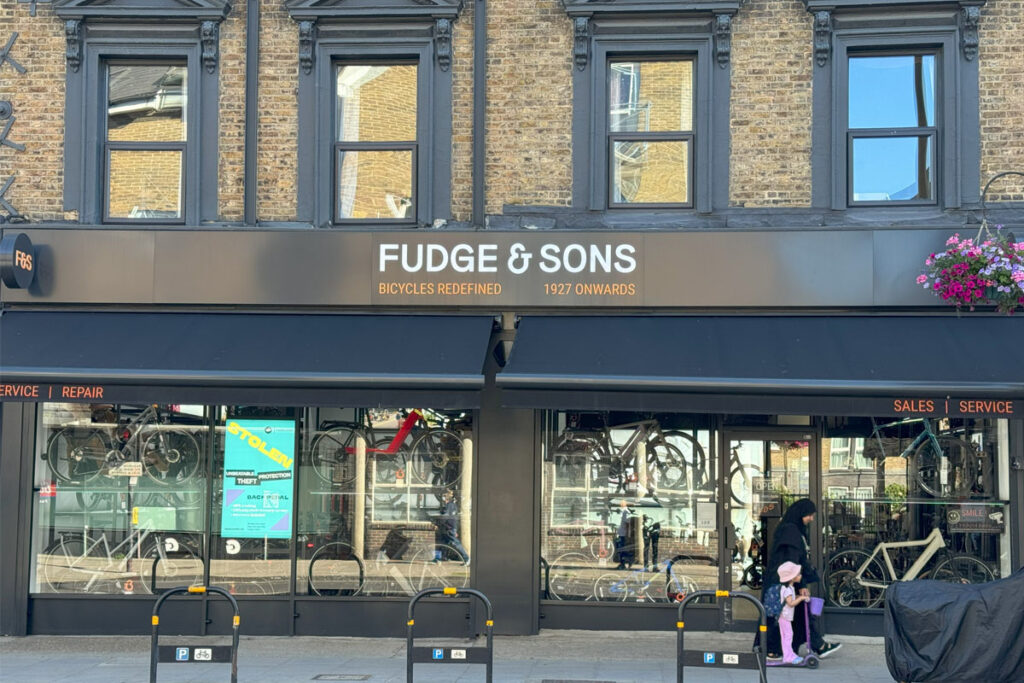
…and Real World Profitable Stores
As briefly mentioned in the introduction to this article, I also pre-arranged before arriving in London to visit four different bike shops that represented quite a wide range of formats and operational styles.
One of these, pictured above, has been owned by the same family for just under a century and was perhaps the most directly relatable to many Australian bicycle stores.
Because these interviews were fairly long, with many photos also taken, I’m splitting this London bicycle retail feature into two parts. If you’d like to read more about the more “normal” style stores, then please go to the article entitled, “Ideas From Four Unique London Bike Shops.”
